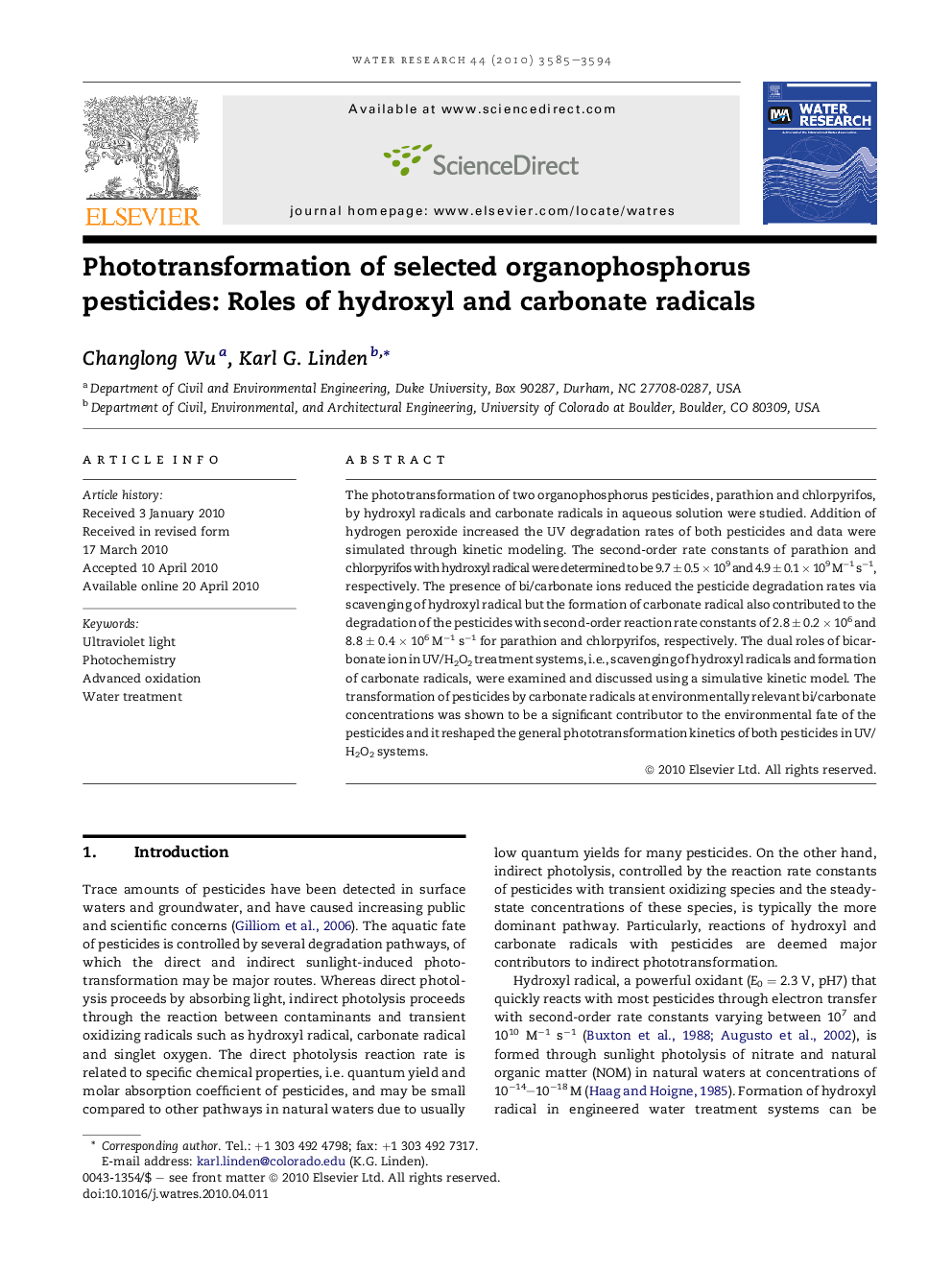| Article ID | Journal | Published Year | Pages | File Type |
|---|---|---|---|---|
| 4484056 | Water Research | 2010 | 10 Pages |
The phototransformation of two organophosphorus pesticides, parathion and chlorpyrifos, by hydroxyl radicals and carbonate radicals in aqueous solution were studied. Addition of hydrogen peroxide increased the UV degradation rates of both pesticides and data were simulated through kinetic modeling. The second-order rate constants of parathion and chlorpyrifos with hydroxyl radical were determined to be 9.7 ± 0.5 × 109 and 4.9 ± 0.1 × 109 M−1 s−1, respectively. The presence of bi/carbonate ions reduced the pesticide degradation rates via scavenging of hydroxyl radical but the formation of carbonate radical also contributed to the degradation of the pesticides with second-order reaction rate constants of 2.8 ± 0.2 × 106 and 8.8 ± 0.4 × 106 M−1 s−1 for parathion and chlorpyrifos, respectively. The dual roles of bicarbonate ion in UV/H2O2 treatment systems, i.e., scavenging of hydroxyl radicals and formation of carbonate radicals, were examined and discussed using a simulative kinetic model. The transformation of pesticides by carbonate radicals at environmentally relevant bi/carbonate concentrations was shown to be a significant contributor to the environmental fate of the pesticides and it reshaped the general phototransformation kinetics of both pesticides in UV/H2O2 systems.
